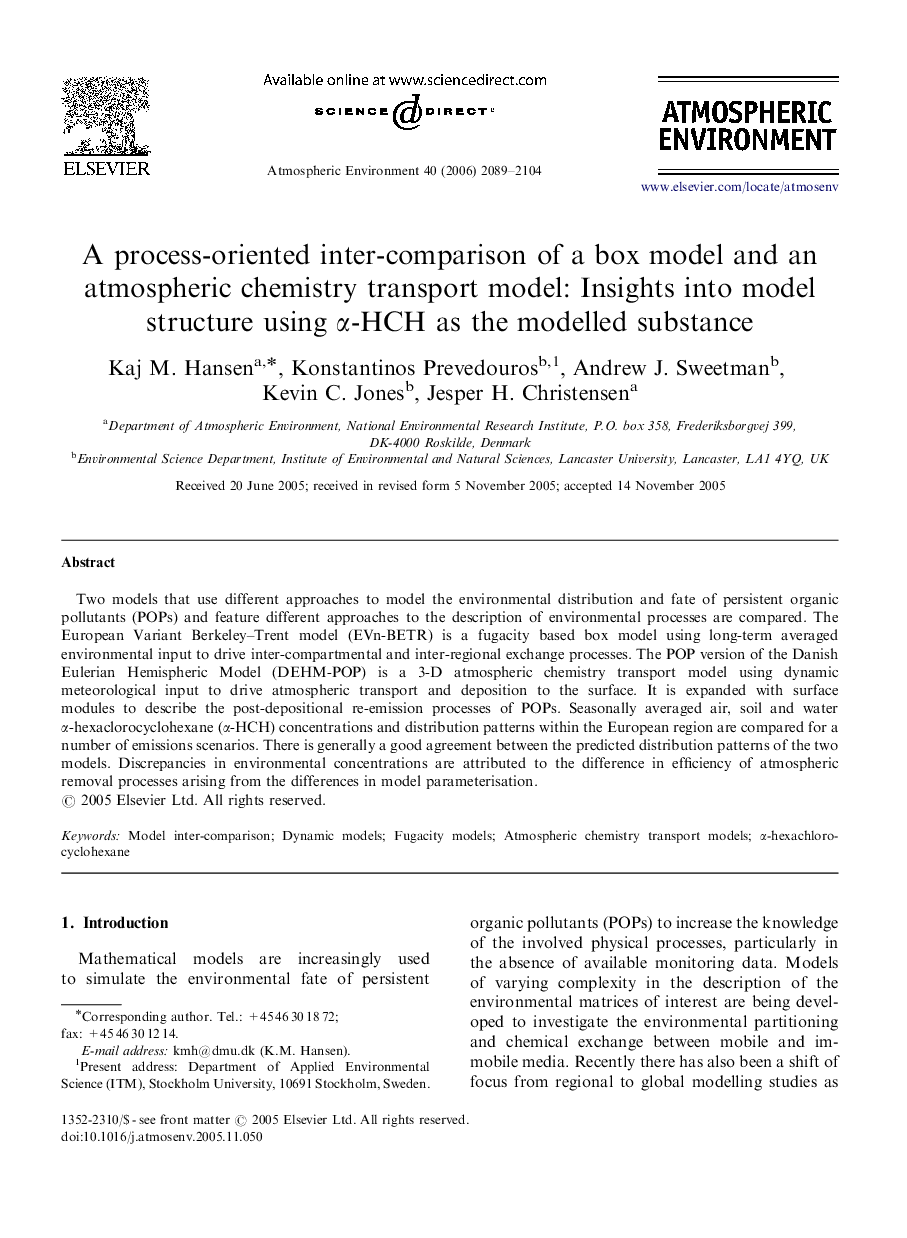| Article ID | Journal | Published Year | Pages | File Type |
|---|---|---|---|---|
| 4445056 | Atmospheric Environment | 2006 | 16 Pages |
Two models that use different approaches to model the environmental distribution and fate of persistent organic pollutants (POPs) and feature different approaches to the description of environmental processes are compared. The European Variant Berkeley–Trent model (EVn-BETR) is a fugacity based box model using long-term averaged environmental input to drive inter-compartmental and inter-regional exchange processes. The POP version of the Danish Eulerian Hemispheric Model (DEHM-POP) is a 3-D atmospheric chemistry transport model using dynamic meteorological input to drive atmospheric transport and deposition to the surface. It is expanded with surface modules to describe the post-depositional re-emission processes of POPs. Seasonally averaged air, soil and water αα-hexaclorocyclohexane (αα-HCH) concentrations and distribution patterns within the European region are compared for a number of emissions scenarios. There is generally a good agreement between the predicted distribution patterns of the two models. Discrepancies in environmental concentrations are attributed to the difference in efficiency of atmospheric removal processes arising from the differences in model parameterisation.
